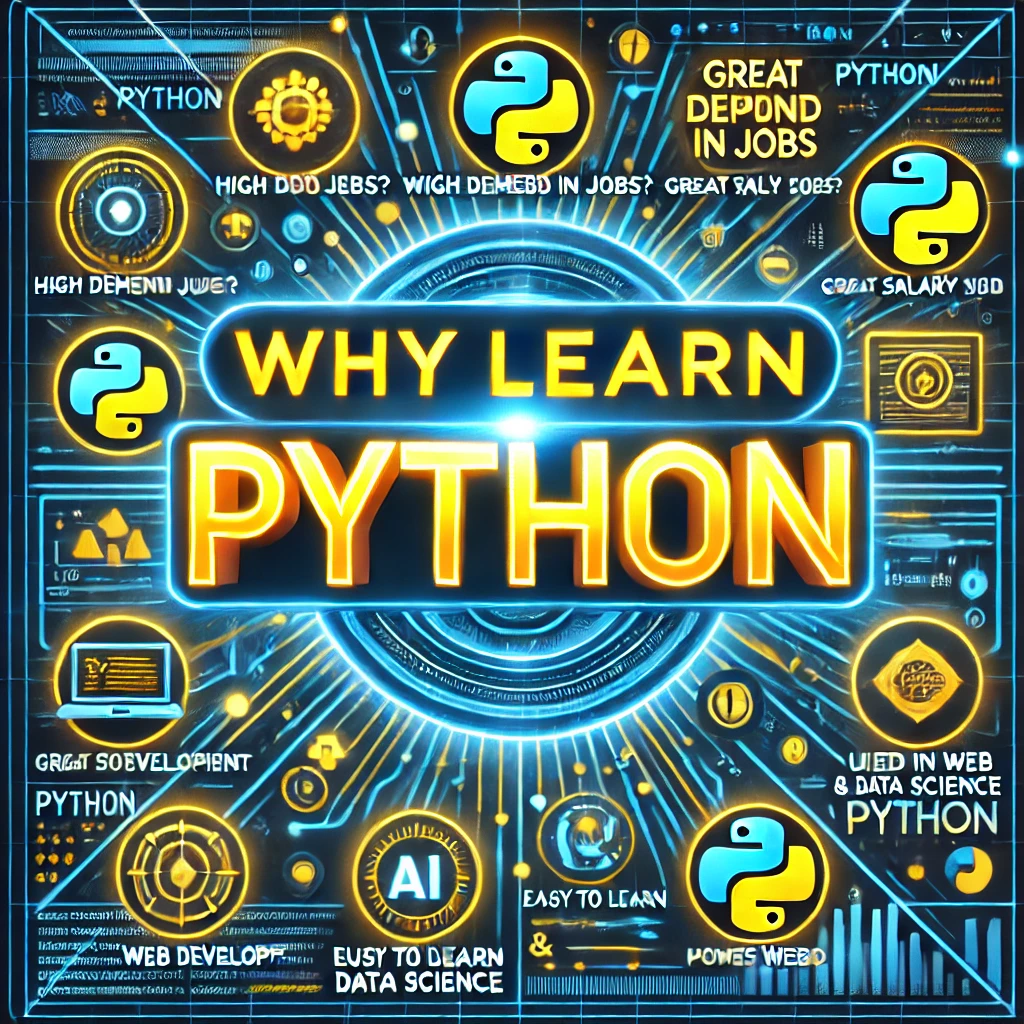1. Introduction
Reason why learn Python is one of the most popular programming languages in the world. It is known for its simplicity, versatility, and powerful features, making it an excellent choice for beginners and professionals alike.
Why is Python So Popular?
- Easy to Read & Write: Python has a simple and clean syntax, similar to English.
- Wide Range of Applications: Used in web development, artificial intelligence, automation, and more.
- Strong Community Support: Millions of developers contribute to Python’s growth.
- High Demand in Jobs: Many top companies look for Python developers.
2. Examples: Python in Action
Let’s look at a simple Python example:
Basic Python Program
name = input("Enter your name: ")
print("Hello, " + name + "!")
Explanation:
input()gets user input.print()displays the message with the user’s name.
Output Example:
Enter your name: Alice
Hello, Alice!
3. Real-Life Applications of Python
Python is used in almost every industry. Here are some key areas:
a) Web Development
Python frameworks like Django and Flask help build fast, secure websites.
- Example: Instagram and YouTube use Python for backend operations.
b) Data Science & AI
Python libraries like Pandas, NumPy, and TensorFlow are used for data analysis and machine learning.
- Example: Google’s AI assistant and Netflix’s recommendation system use Python.
c) Automation & Scripting
Python can automate tasks such as sending emails, renaming files, or web scraping.
- Example: IT professionals use Python to automate server monitoring and software updates.
d) Game Development
Python is used for game logic and scripting.
- Example: Battlefield 2 uses Python for in-game mechanics.
e) Cybersecurity
Python helps in ethical hacking and security testing.
- Example: Cybersecurity experts use Python to find vulnerabilities in networks.
4. Common Mistakes and How to Fix Them
Mistake 1: Forgetting to Use Proper Indentation
Python relies on indentation instead of {} like C or Java.
❌ Incorrect:
def greet():
print("Hello!")
✅ Correct:
def greet():
print("Hello!")
Mistake 2: Mixing Tabs and Spaces
Python enforces consistent indentation. Mixing tabs and spaces can cause errors.
❌ Incorrect:
def test():
print("Hello")
print("World") # Indentation Error
✅ Correct:
def test():
print("Hello")
print("World")
Mistake 3: Using = Instead of == for Comparisons
The = operator is for assignment, while == is for comparison.
❌ Incorrect:
if x = 10:
print("x is 10")
✅ Correct:
if x == 10:
print("x is 10")
5. Conclusion
Python is a powerful yet beginner-friendly language with applications in web development, AI, automation, and more. By learning Python, you open doors to various career opportunities and tech advancements.
Next Steps:
- Practice basic Python coding.
- Explore libraries like NumPy and Flask.
- Work on small projects to apply your knowledge.

